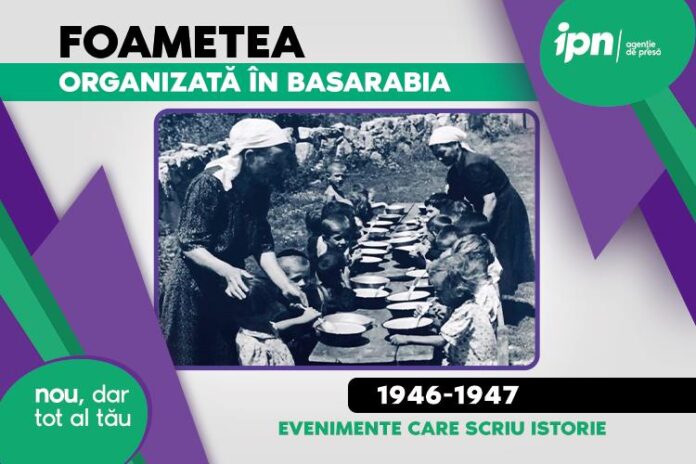Almost 200,000 people died during the famine organized by the Soviet regime in 1946-1947, in the Moldavian Soviet Socialist Republic. Archival documents and survivors’ testimonies, however, suggest that this figure does not fully reflect the harsh reality and the number of victims is much higher than the official statistics, the IPN reports.
The post-war famine in the Moldavian SSR represents the most painful period in the contemporary history of the state, surpassing even mass deportations by the number of lives lost in peacetime. Numerous archival documents mention the decisive role of the political factor in triggering a social catastrophe and the humanitarian disaster that followed.
In the summer of 1946, the drought reached an extreme level, after several years of little rain and almost snowless winters. Despite these unfavorable weather conditions, the authorities imposed mandatory grain quotas on farmers, both for that year and for 1947. In addition to grain, the people were forced to hand over potatoes, meat, milk, wool, sunflower to the state.
The collection operation was coordinated by the Communist Party and state institutions. At the local level, the responsibility lay with the heads of village soviets, the activists. Official sources justified these actions by the need to build strategic grain reserves, considered essential for strengthening the Soviet Union’s position internationally.
The local authorities decided that the food managed by the state should be given to the population according to the social category to which they belonged. State employees, children, students, the military, and other social groups received cards that allowed them to buy bread, food, and other necessities. Thus, some of the inhabitants of cities managed, to a certain extent, to cope with the new reality. While the population in villages, which was practically deprived of access to this aid, had to fend for themselves.
The shortage of fodder forced people to slaughter their cattle. The food crisis was so severe that many students dropped out of school. There were also attempts to illegally cross the border into Romania, in the hope of escaping hunger.
During that period, there was an alarming increase in robberies and murders. Animals were stolen more often, but also food from warehouses, canteens, as well as bread cards.
Cases of cannibalism were also reported and children were most often the victims.
To support people in a state of extreme exhaustion, the authorities lent grain, opened public canteens and healthcare centers. However, state interventions failed to significantly change the conditions of those affected.
There are opinions that the famine was used as a tool to intimidate the population. Deprived of food, the people no longer had the strength to think critically and oppose the authorities. This strategy aimed to stifle any type of manifestation.
Specialists believe that the famine left deep imprints both on the bodies and on the collective memory of Moldovans. As a result of the repression, the material and spiritual culture of the population was lost. For this reason, it is a moral duty of the society of the Republic of Moldova to keep alive the memory of those tragedies.
The subject of starvation had been a “taboo” subject in Soviet historiography for years, until the late 1980s and early 1990s. The “perestroika” policy, initiated by the last leader of the Soviet Union Mikhail Gorbachev, generated heated public debates on forbidden topics of the past, implicitly about the famine in the MSSR. The opening of the archives significantly facilitated historical research and contributed to the knowledge of the events of the post-war famine in Soviet Moldavia.
The day of remembrance of the victims of the famine of 1946-1947 is marked in the Republic of Moldova on the third Saturday in April.



